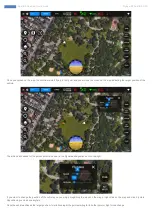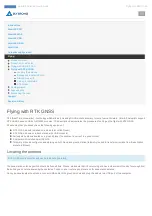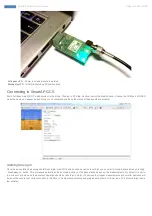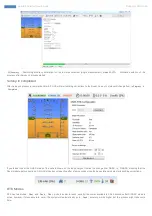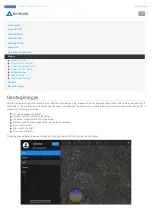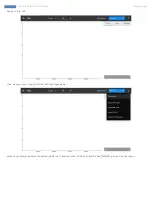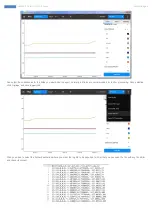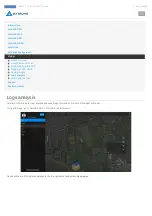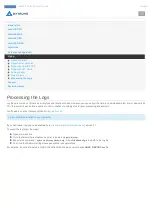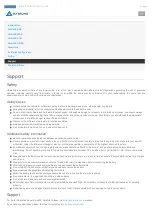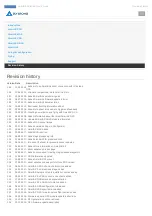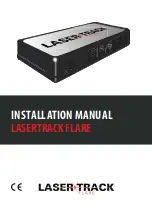
Support
Safety
Operating a powered vehicle of any kind can be a lot of fun, but it carries certain inherent risks. Regulations governing the use of powered
vehicles, including aircraft, vary from locale to locale, even within the same country or district. It is your responsibility to ensure that you
understand and comply with all local laws and regulations.
Safety basics
Never operate the vehicle or software in a way that could be dangerous to you, other people, or property.
Always keep propeller arcs free of objects and body parts while the vehicle is live.
Keep in mind that software and hardware failures happen. Although we design our products to minimize such issues, you should always
operate with the understanding that a failure could occur at any time and without warning. Accordingly, you should take the appropriate
precautions to minimize danger in case of product failure.
Never use the software or hardware for manned vehicles.
Always operate within local laws and regulations.
Do not operate the aircraft if you are under the age of 16.
Additional safety information
Be sure to maintain safe distances between people and your aircraft.
Never operate your aircraft if your ability to do so with the utmost attention to safety is impaired in any way. Do not operate your aircraft
while tired, under the influence of drugs or alcohol, or otherwise unable to operate it with the highest attention to safety.
Environment conditions can change rapidly and can make operation difficult. If this occurs, land your aircraft and discontinue use
immediately. Do not operate your aircraft if operating conditions are not ideal. This includes, but is not limited to, rain, snow or excessive
wind.
Always ensure the battery cable is disconnected from the aircraft until you are ready to fly, and ensure that your batteries are fully charged
prior to use.
Always turn on the transmitter and ensure the throttle stick is all the way down before connecting the battery.
After landing, disarm your vehicle immediately and disconnect the battery cable.
Do not turn off the transmitter until after you have disconnected the battery.
Always remove the propellers while testing the motors.
When the battery is connected, always assume the vehicle is live and the motors are armed.
Do not attempt to fly longer than the battery’s safe capacity.
Do not operate the vehicle with excess weight attached.
Ensure that all vehicle components are well maintained before each flight. Ensure that components are firmly attached and operating
properly.
Replace any worn or damaged components before each flight. Never operate with any damaged or worn components.
Support
For more information about SmartAP AutoPilot, please, visit
website.
If you have any questions, please, feel free to contact us at
SmartAP PRO
SmartAP MAX
SmartAP PDB
SmartAP GNSS
SmartLink
Autopilot configuration
Flying
SmartAP AutoPilot User’s Guide
Support
Sky-Drones - SmartAP Flight Control Systems
149 / 151
Summary of Contents for SMARTAP GNSS
Page 1: ...Flight Control System User s Guide www sky drones com ...
Page 2: ...All rights reserved ...
Page 16: ...SmartAP AutoPilot User s Guide Installation ...
Page 23: ...SmartAP PRO v 1 pinout SmartAP AutoPilot User s Guide Installation ...
Page 24: ...SmartAP PRO v 0 pinout SmartAP AutoPilot User s Guide Installation ...
Page 25: ...SmartAP AutoPilot User s Guide Specifications ...
Page 34: ...SmartAP AutoPilot User s Guide Specifications ...
Page 36: ...SmartAP AutoPilot User s Guide Installation ...
Page 55: ...Bottom SmartAP AutoPilot User s Guide Installation ...
Page 68: ...SmartAP AutoPilot User s Guide Manual control ...
Page 73: ...SmartAP AutoPilot User s Guide API and SDK ...
Page 79: ...SmartAP AutoPilot User s Guide Troubleshooting ...
Page 86: ...SmartAP AutoPilot User s Guide Getting the software ...
Page 96: ...SmartAP AutoPilot User s Guide General configuration ...
Page 110: ...T960 Hexacopter F450 Quadcopter SmartAP AutoPilot User s Guide Standard PID presets ...
Page 111: ...3DR Hexacopter SmartAP AutoPilot User s Guide Standard PID presets ...
Page 112: ...SmartAP AutoPilot User s Guide Updating GNSS Module ...
Page 136: ...SmartAP AutoPilot User s Guide Flying with RTK GNSS ...
Page 147: ...SmartAP AutoPilot User s Guide Processing the Logs ...

